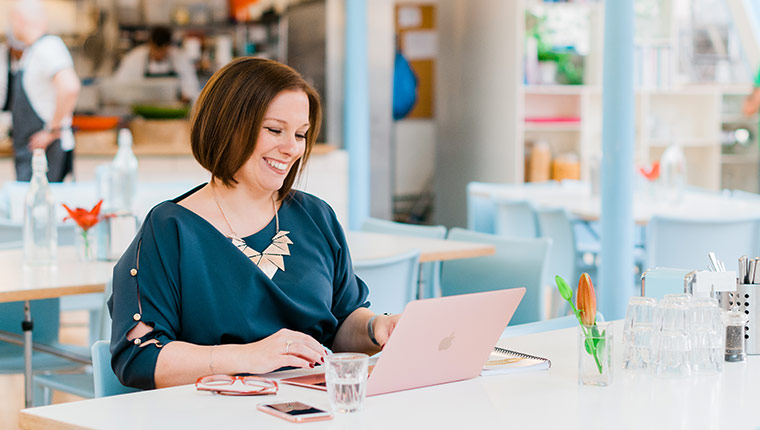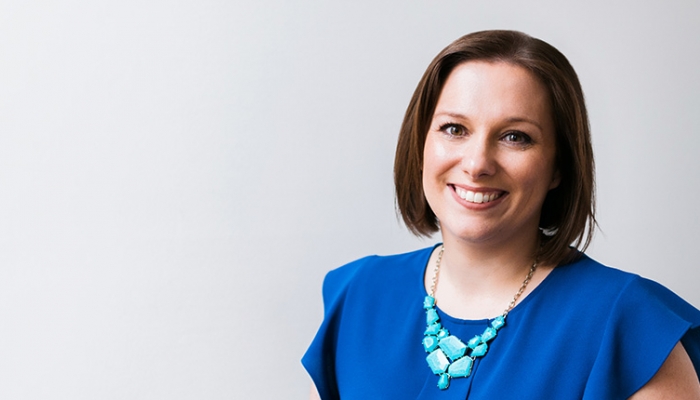PR Blogger Spotlight: Rachel Miller, All Things IC
‘Readers tell me being featured on All Things IC has helped them get a new job, raise their profile or secure a promotion, which makes me proud to know my website has played a part in their success.’ Today’s spotlight is with All Things IC’s Rachel Miller, who shares all things internal communications with her readers.
Having started her career as a journalist back in 1999, Rachel has seen the evolution of both sides of the media/PR relationship. Read on for her take on some of the biggest changes the industries have gone through, as well as retro tools of the trade that didn’t quite make it into this decade (microfiche, anyone?).
How did you originally get started with writing about PR, marketing and comms?
I started my blog in 2009 while working in-house at Tube Lines (which is now part of TfL) to help me research how social media could be used for internal communication.
There were only two case studies globally I could refer to in my post-graduate diploma in Internal Communication Management dissertation back then. Nowadays, I’d be spoiled for choice!
My blog came about because I wanted to share the resources I’d found, have a space to document my findings and to find likeminded people who were also interested in the same topics.

What’s your favourite thing to post about and why?
My favourite thing to write about is internal communicators. I particularly love featuring practitioners who have overcome a struggle I know others are grappling with.
Readers tell me being featured on All Things IC has helped them get a new job, raise their profile or secure a promotion, which makes me proud to know my website has played a part in their success.
What are some of the recent campaigns you’ve written about that you really liked and why were they special?
I recently welcomed Sara Vogt, deputy director, corporate communications at the Ministry of Justice here in the UK as a guest blogger. Sara (@_saravogt) wrote about their values campaign and how organisations can live their values.
I liked it because the Ministry of Justice had identified the things that will help them become a truly values-led organisation: where their values underpin their strategic decisions, implementation of their business activities and how every employee behaves with their colleagues, stakeholders or users of their services.
Sara wrote: ‘With our values campaign we’re giving staff a platform to share their personal stories of how they are living our values and how they have felt supported at work – our colleagues have shared their many stories, including of being supported when returning to work after gender reassignment; of thriving at MOJ after a childhood growing up in care; and of gaining confidence in public speaking for the first time’.
With mental wellbeing being a big issue in the industry at the moment, what do you think agencies can do to support their employees?
I think every organisation is responsible for enabling conversations around mental health and wellbeing to happen. Regardless of the size of your company, there are practical steps you can take to help your employees.
I believe conversations about mental health need to be part of the way companies communicate; we need to make it okay to admit when you’re not okay and support our workforce and managers to have honest discussions, underpinned by robust support, policies and advice.
I’ve partnered with mental health at work expert Jo Hooper to provide a new Mental Health Leadership Masterclass on 6 April 2020 to help comms practitioners learn more.
I’ve blogged about mental health extensively on my blog, including featuring Jamie Angus, internal communications and engagement manager at PDSA writing about the work they’re doing to give colleagues a voice on mental health.
How can the PR industry work on its diversity problem?
Unfortunately, there are various diversity problems in PR, which is reflective of society as a whole.
Workplace inclusion requires a shift in organisational culture and is a recognition that policies alone are not sufficient to build an inclusive workplace. I blogged about how to understand and improve diversity back in 2018 and could have written it today as little has changed.
You need to know the data behind any problem so you can make informed decisions. At the very least, companies need to prioritise representation across the dimensions both in terms of how they communicate and how they recruit.
How has the relationship between the media and public relations changed during your time in PR?
Speed is one of the biggest shifts we’ve seen. I started my career as a journalist in 1999 and moved into internal communication in 2003. PR and comms has changed a lot in that time. The fundamental principles of good, effective communication haven’t, but the methods and media have.
For example, there was only one computer with internet access in the newsroom when I was a journalist and it was incredibly slow. This was the era when we weren’t using search engines yet and spent a lot of time validating and researching at libraries (often using microfiche!) before publishing.
The speed at which we communicate and publish today means the relationship between the media and public relations is constantly evolving.
Do you think calling to pitch stories to journalists can ever be a good move?
Rarely. Only if you are certain it will be of true interest, fits their niche, they’re the right person to contact, they’re not on deadline – there are many things to think through first, which are potential barriers!
However, you can’t beat having a proper conversation rather than flooding someone’s inbox. Pitching to me via phone is never the right thing to do, but to make your pitch stand out in my inbox, it needs to be timely, targeted and relevant for my readers.
What are the pros of working with influencers versus ‘traditional’ media?
I enjoyed speaking with Ste Davies last year on his New Influence podcast. We discussed the topic of influencers as my take is from the inside out. I have numerous conversations with my clients about their internal influencers and ambassadors and how that relationship does or doesn’t work.
Do you work with other PRs on your blog? How would you prefer they approach you and with what kind of content?
I rarely work with other PRs on my blog as feedback from my readers shows they prefer reading articles by their peers, which is mainly in-house communication practitioners from around the globe.
However, if someone has taken the time to read my guidelines, understood the topics I write about and has a targeted, timely and relevant topic, I will consider it.
I get approached daily by PRs. The best ones have done some research, they’ve looked at the content I’ve published, spotted a gap and sent me a relevant message. I say no to pitches 90% of the time because they are from agencies wanting to use my blog for their own gains, rather than thinking about how they could add value to my readers.
What other blogs do you check out regularly?
My fellow bloggers within this Top PR category are familiar to me, I’ve read some of their blogs for years.
I enjoy the weekly round-up from PR Place, edited by Richard Bailey, as it helps me uncover new voices in the PR world. I like to support those who are just starting out by reading and sharing their posts to encourage them.
I also love listening to podcasts and particularly like Holly Tucker’s Conversations of Inspiration series with entrepreneurs.









Leave a Comment